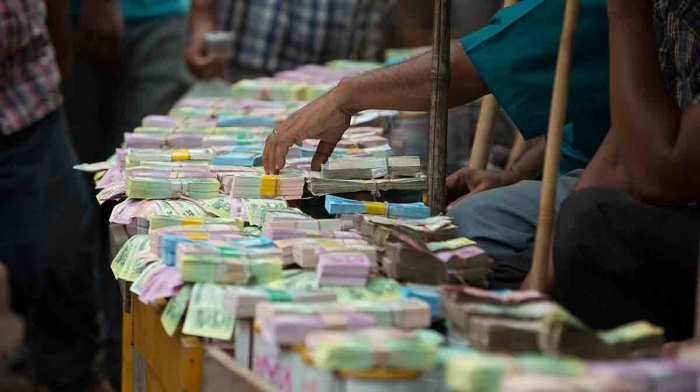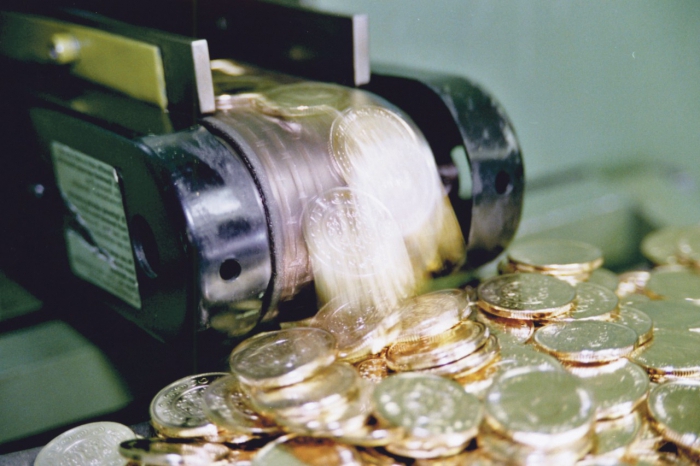Monetary policy of the state is an integral part of the system of management and control of the economy. Its conductor is the central bank (CB). Through the methods and methods available to him, he affects cash flows and business activity.
In order to understand in more detail how and for what purposes the monetary policy of the state is implemented, it is necessary to determine its (state) functions and tasks.

State Functions
State functions are not limited to the regulation of the economy, but extend to other areas of life. In all matters in which society needs help and control, there must be a “hand of state power”.
Its functions include:
- Maintaining stability and economic growth.
- Protection of the rights and freedoms of all persons - physical and legal.
- Money flow control.
- Redistribution of cash flows.
- Production activities.
- Foreign economic and political activity.
- Promoting the development of basic science.
- Addressing environmental and other global issues.
Each of these functions has its own institutions, goals and objectives, tools and methods by which they are implemented. In particular, monetary policy and its objectives serve to work with the financial market, which is part of the economic system.
Goals of regulation of the economy at the state level
In order to manage the economy, it is necessary to understand at what point the system is at the moment and what goals are the main ones. After that, the tools that will best affect the current situation and lead to the desired result are determined.
What may be the goals of economic regulation:
- Increase in government revenue.
- Approaching full employment.
- Moderate inflation, price stability.
- The economic growth.
- Dominance of laws of free competition.
- Stabilization of the economy, etc.

Monetary and fiscal policies of the state are used to manage the country's economy. The first affects the system with the help of the money market, the second - of budget and tax mechanisms.
Objects and monetary policy participants
The goals and instruments of monetary policy are implemented through its subjects, which include the Central Bank, banks and other participants in the money market. Objects are indicators of the money market: demand, supply, price. There is such a thing as money market, being part of the financial. The same laws apply here as in any other market. Under the influence of supply and demand factors, equilibrium price.
If the supply is gaining momentum, but demand remains in place, then the cost of money (nominal interest rate) decreases and vice versa. Market mechanisms seek to balance supply and demand with price changes. Monetary policy of the state can be briefly described as control over indicators of the money market to achieve a certain level of their value. In the event of rapid economic growth, to prevent the subsequent inevitable sharp recession, the Central Bank may affect the money market in order to change its value.
With a changing speed of money circulation, the Central Bank must adjust its amount so that there is enough money, but there is no excess.
Financial policy concepts
The tools and methods of monetary policy depend on the chosen concept. In modern conditions there are only two of them:
- Cheap money, or scientific language - the concept of credit expansion.
- Expensive money, in other words, the concept of credit restriction.
Credit expansion tools are aimed at increasing the resources of banks, which means the possibility of obtaining a large number of loans for the population and enterprises. With the help of such actions, the amount of money is increased.
Credit restriction means a decrease in the activity of banks in lending to reduce the amount of money.
The choice of concept determines the set of tools and methods that will be used to achieve goals in the near future and more distant future. But this is a difficult task, requiring a comprehensive analysis of the situation on finance market and in the economy as a whole, coordination of actions of money market entities with the general course of the country's policy.
Monetary policy methods, an idea of time lags
Methods of monetary policy of the state are concrete methods by which central and commercial banks influence the supply and demand of money.
Economists distinguish two types of methods: direct and indirect (indirect).
The banking system should be flexible enough to respond in a timely manner to changes in factors and indicators in the money market. But no matter how quickly one or another measure is introduced to regulate the money market, a certain time passes between the recognition of the problem, the development of a system of measures of influence and their application, which is called the time lag.

It should also be borne in mind that regardless of the tools and methods that the monetary policy of the state uses, a certain time also elapses between their implementation and the reaction of economic entities.
Time lags make it difficult to analyze and develop solutions to stabilize the situation in the money market. The monetary policy of the state should be flexible enough and thought out in order to take into account their influence.
Direct methods of influencing money circulation
The Central Bank has the ability to clearly regulate the activities of banks: set limits on the size of loans and deposits, the maximum and minimum interest rates. Such methods are called direct.
The positive aspects of direct methods are:
- reduction of time lags;
- low costs for their implementation;
- quite predictable results.
But there are also disadvantages to such tricks:
- violation of competitive conditions in the financial services market;
- inefficient allocation of available funds;
- decrease in the attractiveness of bank services.
Monetary or monetary policy of the state using such methods at first glance meets all the needs of government. But it can lead to the fact that banks cease to fulfill their functions, and demand will turn to other financial organizations, whose activities are not directly regulated by the state. So, the Central Bank may lose control over money circulation.

Direct methods - this is a gross interference in market mechanisms, as a result of such actions the money supply can sharply decrease, which will lead to a decline in production.
Indirect methods of monetary policy
Increasingly, the Central Bank began to abandon direct methods of intervention in monetary circulation. Strict guidelines apply only in conditions of a serious economic crisis and when quick action is needed.
In other cases, the Central Bank may influence the situation with milder, indirect methods. They stimulate the desired behavior. market entities motivate for certain actions.
Disadvantages of indirect methods:
- increased time lags;
- possible large error in the forecasts of the results of certain measures;
- their effectiveness is associated with the degree of development of market mechanisms.
Advantages of indirect regulation:
- lack of deformation of market mechanisms;
- observance of the rights of market entities;
- preventing the flow of capital to shadow markets;
- they do not lead to sharp, shock drops in the amount of money and lower production levels.

Monetary Policy Toolkit
The means by which the Central Bank acts on money market facilities are instruments of the state’s monetary policy.
One of them is the reserve ratio. This is a certain percentage of liabilities, the amount that banks are obligated to keep with the Central Bank. If the size of the reserve increases, then the volume of free money at the disposal of banks is reduced naturally. Thus, the release of additional money to the market is prevented. If the reserve ratio decreases, then with additional funds, banks can increase the number of loans issued (in monetary terms). As a result, the money supply will increase.
Monetary, or monetary policy of the state, is also implemented through the regulation of interest rates. The Central Bank lends to banks. If the interest on such a loan (refinancing rate) is reduced, then the funds become more accessible to banks. If interest increases, then commercial banks either refuse to loan, or are forced to raise interest on loans issued. In any case, an increase in the refinancing rate will inhibit the growth in the amount of money in circulation.
The third instrument of the Central Bank’s influence on the amount of money is its actions on the securities market. Including government securities are bought and sold. This tool is very widely used in world practice today. When the Central Bank buys up securities, it gives the effect of issuing money, and when it sells it, the effect of withdrawing money from circulation.
The goals and instruments of monetary policy are closely related. Depending on the tasks set, funds can be used in two different directions, stimulating or pacifying business activity.
Additional tools
The above methods relate to traditional tools. But there are several other means, for example, currency regulation and the establishment of boundaries for increasing the volume of money in circulation.
Monetary policy as a type of stabilization policy involves an analysis of the causes and consequences of money supply growth. Not only crisis phenomena in the economy require special measures, but also a sharp increase in production, as a result of which uncontrolled inflation and deformation of market mechanisms may occur. According to the theory of cycles, after a phase of active economic growth, a sharp and deep recession begins. In order to smooth out the swings, to prevent the situation on the market from getting out of control, the Central Bank limits the amount of money and the speed of its increase.
Currency regulation involves the formation, forecasting and regulation of foreign exchange flows, exchange rates, and external payments. This is an important tool that can limit the outflow and inflow of capital into the country.

Currency regulation can be carried out by direct methods: setting the boundaries of the fluctuation of the exchange rate (currency corridor), fixing it at the same level, etc. But more often indirect methods are used, such as buying and selling currency in open markets. This mechanism is similar to securities transactions with the Central Bank. To strengthen the exchange rate, he sells foreign banknotes, to reduce the rate - he buys.
Regulation of the amount of money and the exchange rate contribute to the stable development of foreign economic and industrial activity of firms, as well as the financial stability of banks.
What determines the choice of CB policy instruments
Monetary policy, goals, instruments and the consequences of its implementation depend on many factors. Among them are:
- The degree of freedom of the market. The more perfect the market mechanisms, the more freedom entrepreneurs and financial institutions have, the milder the methods of monetary policy and, consequently, its consequences.
- The level of independence of the Central Bank. Money market and monetary policy are inextricably linked, but not only capital market indicators affect the activities of the Central Bank. There are more global government tasks, and the tools and methods of the current policy will depend on them. If the Central Bank has a large degree of independence, it is less likely to apply administrative regulatory measures and does not give preference to the state apparatus in lending. Otherwise, the Central Bank may become a sponsor for the country's budget.
- The relationship of different types of government. The monetary system and the monetary policy of the state are inextricably linked with the budget and tax systems and policies. If actions are not coordinated, the goals are multidirectional, then the imbalance of the system will lead to negative consequences for the entire economy.
- Central Bank flexibility. With good organization, minimization of time lags and regular analysis, the flexibility of the Central Bank increases, which means that goals and methods change and adapt to the current situation, and work efficiency increases. If the Central Bank strictly follows the plan and the developed strategy, then the results will be worse.
- The stability of the financial system. The more predictable the reaction of commercial banks to certain Central Bank actions, the more effective the monetary policy will be.
- The individuality of a particular financial system. The same methods and tools in different economic and social environments will give mixed results. Therefore, each Central Bank should work out its policy individually, and not copy the actions of banks in other countries.

To achieve the goals of regulating the cash market, the monetary policy of the state must take into account all these factors, be flexible and consistent.
Monetary policy in Russia
Monetary policy of the state: concept, types, tools, methods - all this creates a theoretical basis for decision-making. But to evaluate the activities of the Central Bank in practice is quite difficult.
For 2014, the economic situation in Russia has changed a lot, this also affected the financial market. The reason for this was external artificially created factors. Under these conditions, evaluating the effectiveness of a particular economic policy is doubly difficult.
But in general, we can say that the main tactical goals of the Central Bank are:
- containment of inflation;
- exchange rate management;
- stimulation of business activity.
Controlling inflation is the main task of the Central Bank of Russia over the past 10 years. In addition, the country's open economy is subject to external influences, and there is no way not to interfere in the formation of the ruble exchange rate, so currency corridors are being established. They plan to abandon this practice and continue to focus all efforts on stable low inflation levels.
The Central Bank of the Russian Federation often uses a refinancing rate as an instrument of influence. Also regularly monitored is the amount of money in circulation and transactions with securities.
The Central Bank of Russia has a fairly large independence, which generally positively affects the conduct of monetary policy. There are less and less contradictions in decisions being made. Analysis is regularly carried out and current goals and methods for achieving them are adjusted, which allows us to talk about the flexibility of monetary policy.








